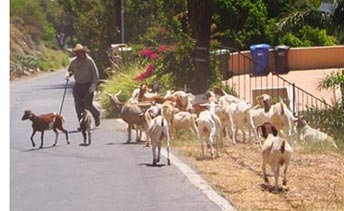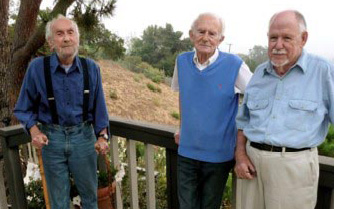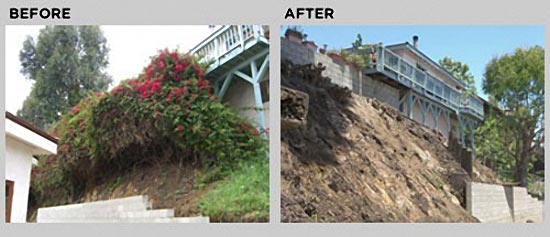Malibu octogenarians get their goats—and safer homes
October 14, 2009
Just what was that herd of goats doing munching grass on the steep hillsides of Malibu’s Horizon Hills earlier this year? They were hired hooves.
Venturing easily to slopes too vertical for weed-whacking men to climb, the sure-footed grass-eaters were hired as part of a fire grant program engineered by an unlikely trio of retired 80-something neighbors in Horizon Hills. The men were determined to reduce the danger of a wind-driven brush fire devastating their 40-home neighborhood, tucked into the Santa Monica Mountains.The retirees—an Auschwitz survivor, a former Luftwaffe private and a World War II Army paratrooper—formed a “fire safe council,” a volunteer non-profit group dedicated to improving local fire readiness. They won nearly $120,000 in federal and state grants, using the funds to cut trees, trim bushes and even attack acres of grass with the voracious goats.
They set up their Horizon Hills group under the umbrella of the California Fire Safe Council, a clearinghouse for fire education and state and federal grants. Los Angeles County has 25 similar local organizations, according to L.A. County Fire Department Forester J. Lopez, who worked closely with the men in the Horizon Hills unit. “This is a great way to empower neighbors to solve their own fire issues,” says Lopez, who also serves as vice chair of the statewide group’s board.
The fire-conscious octogenarians made improbable allies.As a teen and Polish Jew, Herb Kolischer, now 85, had survived more than two years at Auschwitz before immigrating to California and launching a career as an architect.
Physicist Wolfgang Knauer, 83, twice conscripted in the German air force as a teen, worked for decades as a scientist at the Hughes Research Center. Knauer and Kolischer first became acquainted decades ago at neighborhood meetings. After initial wariness, Knauer says of their different backgrounds, “we put the past into the distant past.” They’ve been friends and ski buddies ever since.
The two men got on the fire safety bandwagon thanks to a third friend, Dr. Ernest Masler, 86. The retired psychiatrist, a U.S. Army paratrooper in World War II, became a fire crusader after his old Malibu residence burned down in the 1993 Topanga fire and he moved to Horizon Hills. Masler had spent a few years in a fruitless letter writing campaign urging federal land officials to reduce fire danger with controlled burns in the brushy federal parklands that surround the neighborhood on three sides.
Frustrated, the men decided that if they couldn’t change federal burn policies, they could effect change closer to home by reducing the danger of fires in their own neighborhood.
They formed the Horizon Hills fire safety council in 2005 and soon won a $52,000 grant to hire a tree trimming firm to reduce hazards near homes. “It’s relatively simple to set up, but you have to be persistent,” says Kolischer.
They were certainly persistent with their Horizon Hills neighbors, making house-to-house visits in an effort to persuade them to let tree trimmers lop off branches and remove whole trees. Their secret weapon was the Fire Department’s Lopez, a forester who provided technical expertise and proved a very good negotiator to boot, the men say.
“We did everything we could to persuade some neighbors we weren’t terrorists” for wanting to cut down their beloved trees, jokes Masler. In time, the trio won over most of their neighbors, a task made somewhat easier by the fact that the work would be paid for by the grants.
A $15,000 state grant helped bring in the grass-eating goats. The council won a second federal grant of $52,000 to cut back chaparral and more trees in 2008 and early 2009. The box score: 100 trees were cut down, another 100 were pruned and 15 acres of grass and brush were trimmed.
“We improved the situation a great deal,” says Knauer, “but there is more we need to do.”















 405 bridge work causes a stink
405 bridge work causes a stink
